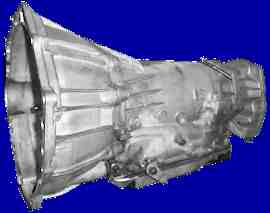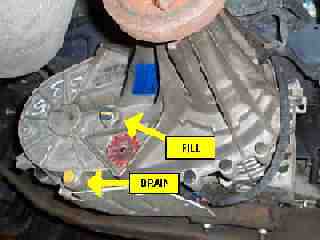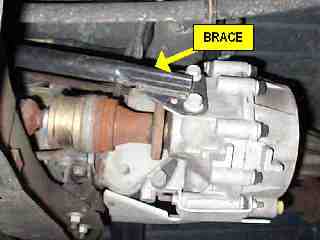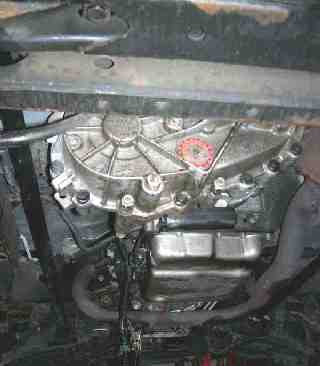NOTE: On
Astro and Safari AWD vans, the cross member which
mounts the rear of the transmission also carries the anchors
for the fixed ends of the torsion bars. Some additional steps
will be necessary to enable the cross member to be removed
safely.
Apply
penetrating oil to both torsion bar anchor/adjustment screws, then back
off the screws while counting the number of turns. Make a note of
this
so they can be adjusted to the same position upon assembly. Once
tension is relaxed from both torsion bars, remove the cross member and
slide the bars from their sockets at both ends.


 Drain the transfer case (if
equipped). On AWD and 4WD vehicles with a floor mounted shift lever for
the transfer case, remove the interior floor trim and disconnect the
shift linkage.
Drain the transfer case (if
equipped). On AWD and 4WD vehicles with a floor mounted shift lever for
the transfer case, remove the interior floor trim and disconnect the
shift linkage.  Some vehicles will have additional
brackets or supports for the transmission and/or transfer case.
Some vehicles will have additional
brackets or supports for the transmission and/or transfer case.  For AWD and 4WD
vehicles, remove the
skid plate from the bottom of the case, and disconnect all electrical
connectors and the vent hose. Support the transfer case on your
trans
jack. Unbolt the transfer case from the transmission adapter and remove
it.
For AWD and 4WD
vehicles, remove the
skid plate from the bottom of the case, and disconnect all electrical
connectors and the vent hose. Support the transfer case on your
trans
jack. Unbolt the transfer case from the transmission adapter and remove
it.